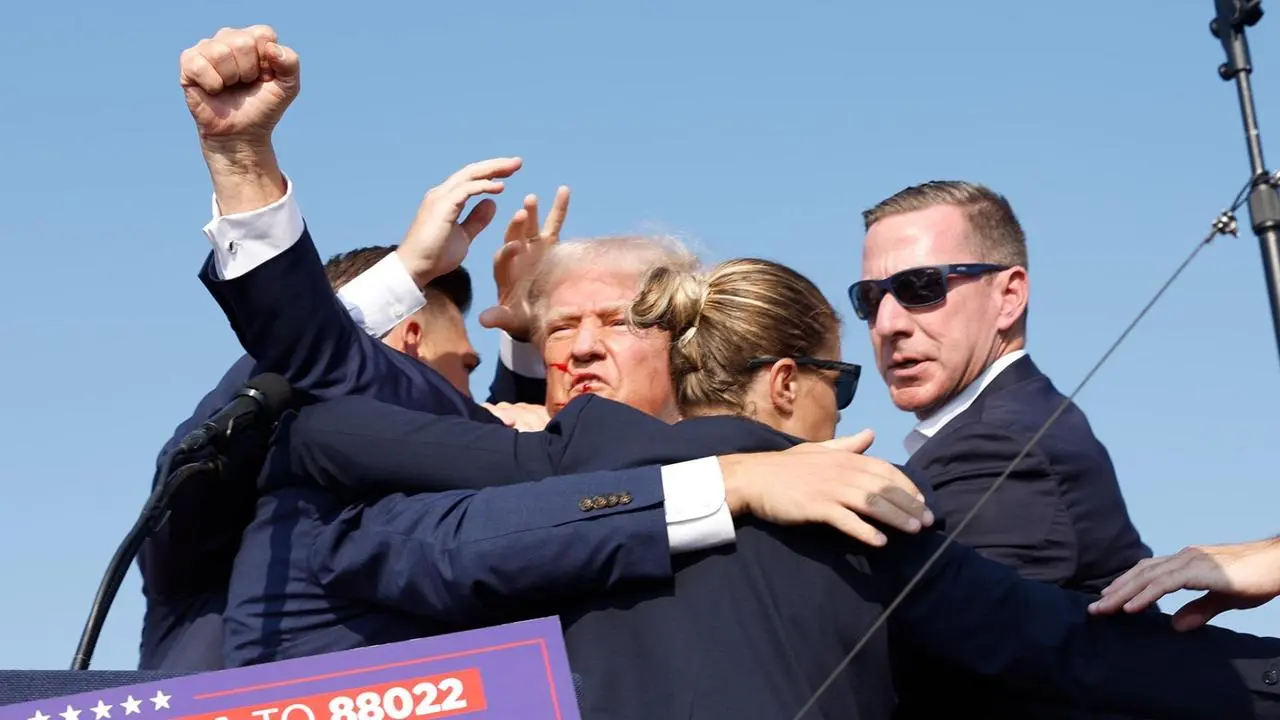The recent Trump shooting, and why conspiracy theories grow (and are dangerous)
On a seemingly ordinary day in July 2024, the political landscape of the United States was shaken by the shocking news of an attempted assassination on former President Donald J. Trump at a campaign rally in Butler, Pennsylvania. The immediate aftermath saw not only widespread concern for Trump’s safety but also an explosion of misinformation and disinformation across social media platforms, exacerbating an already polarised political climate.
The Immediate Spread of Misinformation
According to a detailed report by The New York Times, the first claims linking the attack to President Biden and his allies surfaced within minutes of the incident. Four minutes after the initial report of gunfire, an anonymous account on X (formerly Twitter) posted, “Joe Biden’s antifa shot President Trump.” This baseless claim was one of many that proliferated quickly, suggesting a coordinated attack by left-wing factions or even the Central Intelligence Agency. Within half an hour, conspiracy theories accusing the CIA, Hillary Clinton, and Barack Obama of orchestrating the attack emerged, showcasing the speed at which such narratives can take root online.
The Role of Prominent Figures and Platforms
Prominent far-right figures like Laura Loomer and Republican lawmakers amplified these theories. Loomer’s post connecting Biden’s recent remarks about Trump to the attack suggested a deliberate effort to eliminate Trump, despite the lack of evidence. This narrative was picked up and spread by various right-wing influencers and media outlets, leading to millions of views and shares within the first 24 hours. By the next day, the false narrative that Biden and the Democrats were responsible had reached an audience of over 100 million people on X alone, according to the Institute for Strategic Dialogue.
The Persistence of Conspiracy Theories
Misinformation expert Emerson Brooking highlighted that such rapid spread of conspiracy theories is symptomatic of the current political climate, where distrust and polarisation are rampant. Theories ranged from claims that Trump staged the attack to garner sympathy and boost his election chances, to accusations involving Israeli intelligence, Jews, trans people, and Ukrainians. Despite the FBI identifying Thomas Matthew Crooks, a registered Republican, as the suspect, these baseless accusations continued to dominate online discourse.
The Dangers of Social Proof
Social proof can be particularly dangerous when it comes to misinformation. The more a false claim is repeated and seen by others, the more credible it appears. This can lead to widespread acceptance of unverified or false information, making it difficult to correct later on. In the case of the Trump shooting, the rapid spread of conspiracy theories blaming President Biden exemplifies how quickly social proof can transform speculation into widespread belief.
The Importance of Critical News Consumption
In today’s fast-paced digital world, it is crucial for individuals to develop better habits for consuming news and information:
- Seek Multiple Sources
Relying on a single source of information can lead to a skewed perspective. Checking multiple, credible sources can provide a more balanced view and help to verify facts.
- Be Skeptical of Sensationalism
Sensational headlines and posts are designed to grab attention but often lack substance. It’s important to read beyond the headline and consider the evidence presented.
- Verify Before Sharing
Before sharing information, especially on social media, take a moment to verify its accuracy. Sharing unverified information contributes to the spread of misinformation.
- Understand Confirmation Bias
Be aware of the tendency to favour information that confirms preexisting beliefs. This awareness can help in objectively evaluating new information.
The Impact of Political Polarisation
Adam Berinsky, a political science professor at MIT, pointed out that the swift politicisation of the attack reflects the deep-seated divisions in American politics. The speculation and unfounded claims were not only damaging but also indicative of a broader trend where extreme partisanship fuels the rapid spread of misinformation. This phenomenon is not new but has been exacerbated by social media platforms, which facilitate the viral spread of such content.
Responses from Political Figures
The Biden campaign condemned the spread of disinformation, calling it an “abdication of leadership” by those politicising the tragedy. On the other hand, the Trump campaign remained silent, not issuing any statements to counter or confirm the claims. Some Republican lawmakers, such as Senator Steve Daines, acknowledged the unhelpfulness of the speculation but stopped short of condemning the false narratives outright.
The Role of Social Media and Tech Companies
The incident underscored the challenges faced by social media platforms in curbing the spread of misinformation. Despite efforts by companies like X to monitor and address false claims, the sheer volume and speed at which they propagate present significant hurdles. Platforms like Telegram and Rumble also saw significant traffic related to these conspiracy theories, with videos and posts garnering hundreds of thousands of views.
The Broader Implications
The disinformation surrounding the Trump shooting is a stark reminder of the power of social media to shape public perception and the ease with which false narratives can be disseminated. It highlights the need for robust mechanisms to identify and counteract misinformation, as well as the importance of media literacy among the public.
The attempted assassination of Donald Trump in July 2024 and the subsequent flood of misinformation illustrate the complex interplay between political events and the digital information ecosystem. As conspiracy theories and unfounded claims continue to thrive, it is crucial for society to develop better tools and strategies to navigate the digital landscape and discern fact from fiction. The incident not only reflects the current state of political discourse but also serves as a cautionary tale of the potential consequences of unchecked misinformation in an era where social media holds significant sway over public opinion.




